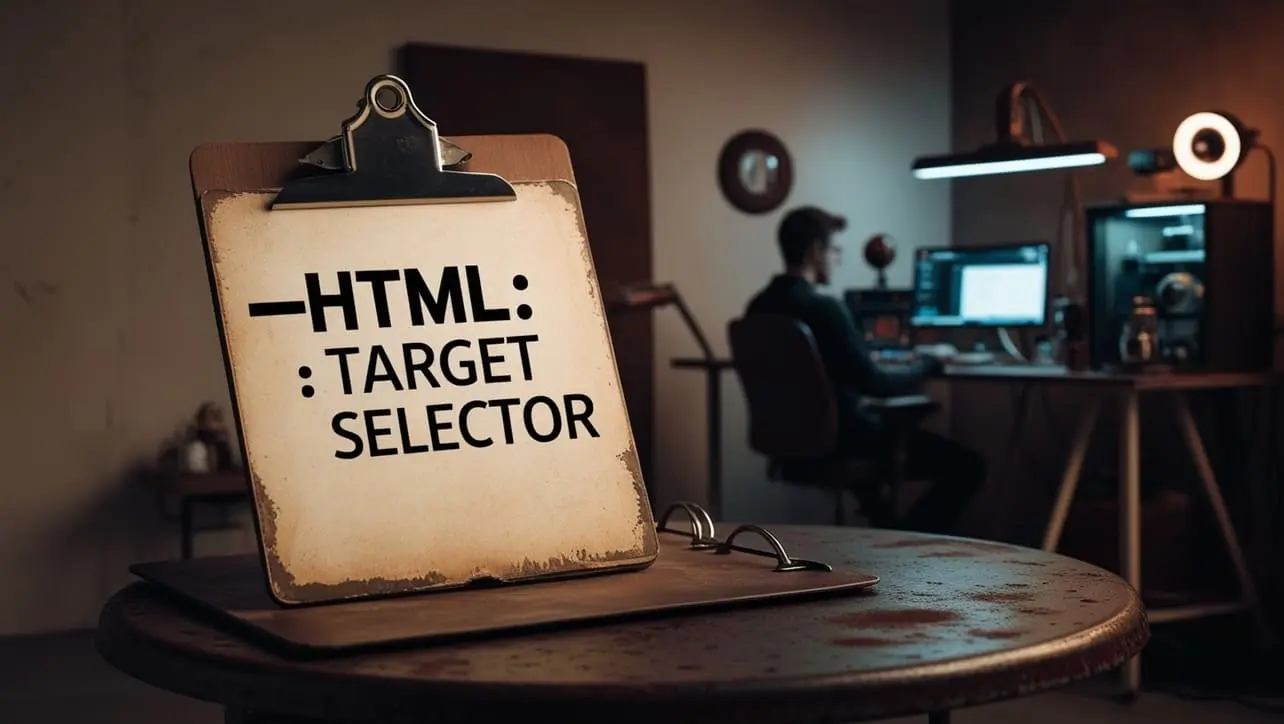
CSS Topics
- CSS Intro
- CSS How To
- CSS Editors
- CSS Properties
- CSS Selectors
- .class
- .class1.class2
- .class1 .class2
- #id
- * (all)
- element
- element.class
- element,element
- element element
- element>element
- element+element
- element1~element2
- [attribute]
- [attribute=value]
- [attribute~=value]
- [attribute|=value]
- [attribute^=value]
- [attribute$=value]
- [attribute*=value]
- :active
- ::after
- ::before
- :checked
- :default
- :disabled
- :empty
- :enabled
- :first-child
- ::first-letter
- ::first-line
- :first-of-type
- :focus
- :fullscreen
- :has()
- :hover
- :in-range
- :indeterminate
- :invalid
- :lang()
- :last-child
- :last-of-type
- :link
- ::marker
- :not()
- :nth-child()
- :nth-last-child()
- :nth-last-of-type()
- :nth-of-type()
- :only-of-type
- :only-child
- :optional
- :out-of-range
- ::placeholder
- :read-only
- :read-write
- :required
- :root
- ::selection
- :target
- :valid
- :visited
- CSS Comments
- CSS Length
- CSS Image Sprites
- CSS Grid Layout
- CSS Grid Flexbox
- CSS @charset Rule
- CSS @font-face Rule
- CSS @import Rule
- CSS @keyframes Rule
- CSS @media Rule
CSS :target Selector

Photo Credit to CodeToFun
🙋 Introduction
The :target selector in CSS is used to style the element that is the target of a URL’s fragment identifier.
This selector allows you to apply specific styles to an element when it is "targeted" by a hash in the URL, commonly used for in-page navigation or linking to specific sections.
💡 Syntax
The signature of the :target Selector is as follows:
:target {
/* CSS properties */
}The :target selector applies styles to an element when its ID matches the fragment identifier in the URL (the part that comes after #).
📝 Example
Here is an example of how to use the :target selector:
☠️ HTML
<!DOCTYPE html>
<html lang="en">
<head>
<meta charset="UTF-8">
<meta name="viewport" content="width=device-width, initial-scale=1.0">
<title>CSS :target Selector Example</title>
<link rel="stylesheet" href="styles.css">
</head>
<body>
<h1>Content Navigation</h1>
<nav>
<a href="#section1">Go to Section 1</a>
<a href="#section2">Go to Section 2</a>
<a href="#section3">Go to Section 3</a>
</nav>
<div id="section1" class="section">
<h2>Section 1</h2>
<p>This is the content for section 1.</p>
</div>
<div id="section2" class="section">
<h2>Section 2</h2>
<p>This is the content for section 2.</p>
</div>
<div id="section3" class="section">
<h2>Section 3</h2>
<p>This is the content for section 3.</p>
</div>
</body>
</html>🎨 CSS
/* Base style for sections */
.section {
padding: 20px;
margin: 20px 0;
background-color: #f0f0f0;
border-left: 5px solid transparent;
}
/* Highlight the targeted section */
:target {
background-color: #e0ffe0;
border-left: 5px solid green;
}In this example:
- When you click a link (e.g., "Go to Section 1"), the browser jumps to the respective section and applies the styles defined by
:target. - The targeted section gets a light green background and a green left border, providing visual feedback to the user.
💬 Usage Tips
- The
:targetselector is especially useful for one-page websites or sections with in-page navigation, where specific sections of content are accessed using fragment identifiers. - You can use smooth scrolling in combination with
:targetto create a smooth user experience when navigating between sections. - The
:targetselector can be combined with other pseudo-classes and selectors to style the targeted element more dynamically.
⚠️ Common Pitfalls
- The
:targetselector only works when an element's id attribute matches the fragment identifier in the URL. If the element doesn't have anid, or theiddoes not match the fragment identifier, the selector won’t apply. - Be mindful of users who disable JavaScript or don’t interact with links. Ensure that content is still accessible without the
:targetstyling.
🎉 Conclusion
The :target selector is a handy tool for adding interactive and dynamic styling to elements based on URL fragment identifiers.
It enhances user navigation by providing visual cues to the currently active or targeted section, making it a popular choice for single-page applications and in-page navigation.
👨💻 Join our Community:
Author

For over eight years, I worked as a full-stack web developer. Now, I have chosen my profession as a full-time blogger at codetofun.com.
Buy me a coffee to make codetofun.com free for everyone.
Buy me a Coffee












If you have any doubts regarding this article (CSS :target Selector), please comment here. I will help you immediately.